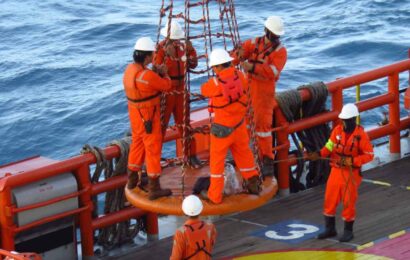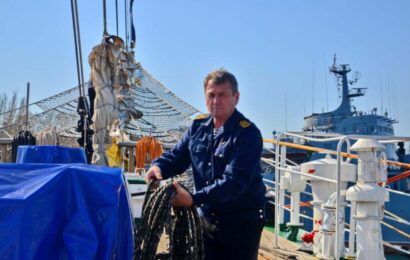- Students: 25
- Duration: 46 hours
Preparation and instruction on protection for all sailors (VI/6 p.p. 1, 2 ̧ A-VI/6 p.p. 1-4)
The purpose of the course:
Training of the ship’s crew in accordance with the International Code of Protection of Ships and Ports (ISPS Code). The result of the course should be the readiness of the crew members to protect the vessel, in accordance with the plan and with a clear interaction with the ship’s protection officer.
Course task:
- Understand differences in security levels and requirements;
- Know the methods used by the intruders to circumvent the protection of the vessel;
- A clear understanding of how to respond to both predicted and emergency situations;
- To examine the characteristics and appearance of weapons and hazardous substances in the volume sufficient to recognize them;
- knowledge of the psychological basis of behavior and characteristic external signs of individuals who may pose a potential danger.
Course content:
Introduction
The introductory part of the course provides students with an opportunity to review the topics they have to learn. Thus, when studying each topic, they will understand its place in the overall system of knowledge about the safety of the ship, which will serve to better assimilate the material.
Here they will get an idea of the main security threats:
- Piracy, terrorism, smuggling;
- refugees and stowaways;
- luggage theft.
Maritime safety policy
This part of the course will be introduced to world practice and modern maritime security policy. Many international organizations, including the United Nations Organization, the International Maritime Organization (IMO), the International Labour Organization, the World Customs Organization, have combined their knowledge and expertise to improve the fight against security threats. They present their conclusions in the rules and instructions, which will be familiarized with the students of the courses.
Security-related responsibility
In the course of study, the crew members should understand the full measure of responsibility for themselves, other crew members, the ship and the cargo. In this section, they will be briefed on the responsibilities of each person involved in the Ship Protection Plan. Each is defined by his task and measure of personal responsibility.
Identifying and recognizing threats, responding to them
A reliable basis for hazard recognition can be a methodical study of the types, characteristics, and appearance of objects that pose a potential threat. It should not be forgotten that the threat is not carried by the weapon itself, but by the person who took it in his hands. Therefore, another way to reduce the danger is psychological assessment of people’s appearance and behavior.
The following methods are used to institutionally improve security:
- Develop and improve the method of inspections with detailed description of the places of possible concealment on the ship;
- Technical equipment and training of the inspection team;
- training staff to work with the technical tools used in inspections (detectors, scanners, X-ray machines).
Emergency preparedness, training and training
The ship must be highly prepared to be protected throughout the operation. To do this, detailed safety plans must be drawn up and procedures for implementing the ship’s protection plan should be drawn up. In addition, it is necessary to ensure the real readiness of people for the necessary actions, for which periodic trainings and exercises are held.
Studying the theoretical part of the course contributes to a better understanding of each crew member’s role in solving the overall important task: ensuring the safety of the ship and the protection of the vessel.






